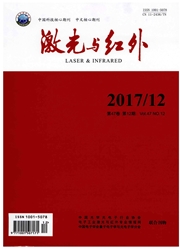

 中文摘要:
中文摘要:
为了研究激光冲击对TC4-DT钛合金圆棒残余应力分布及疲劳特性的影响,采用ABAQUS有限元软件分析了不同冲击载荷下圆棒最小直径截面内残余应力的分布,并对试样先后进行了激光冲击强化试验和拉-拉疲劳试验,最后对疲劳断口形貌进行了对比分析。结果表明,圆棒试样会在表面及近表面形成残余压应力层,在内部及中心区域产生拉应力,且表面残余压应力和内部拉应力皆随冲击载荷的增大而增大;内部拉应力区域面积远大于表面压应力层面积,致使疲劳裂纹扩展加速,从而导致疲劳寿命降低,对圆棒试件的拉-拉疲劳性能产生不利影响;圆棒试样经激光冲击强化后疲劳裂纹源向内部转移,且位于内部最大拉应力区域。该研究对轴类零件经激光冲击强化后的应用条件具有一定的参考价值。
 英文摘要:
英文摘要:
In order to study the influence of laser shock peening on residual stress distribution and fatigue properties of TC4-DT titanium alloy rod,the distribution of residual stress in the smallest diameter cross section of the rod under different impact loads was analyzed by using ABAQUS finite element software. Then the samples were subjected to la- ser shock test and tensile-pull fatigue test, and the fatigue fracture morphology was compared and analyzed. The results show that rods can produce residual compressive stress layer in the surface and near-surface, and the tensile stress is produced in the inner and central regions. Because the area of the internal tensile stress is much larger than the area of the surface compressive stress, the fatigue crack growth is accelerated and the fatigue life is reduced, which adversely affect the tensile fatigue properties of the rod specimen. After laser shocking, the fatigue crack source is transferred to the inside and located in the region which produced maximum tensile stress. This study has a certain reference value for the application conditions of shaft parts after laser shock peening.
 同期刊论文项目
同期刊论文项目
 同项目期刊论文
同项目期刊论文
 期刊信息
期刊信息
